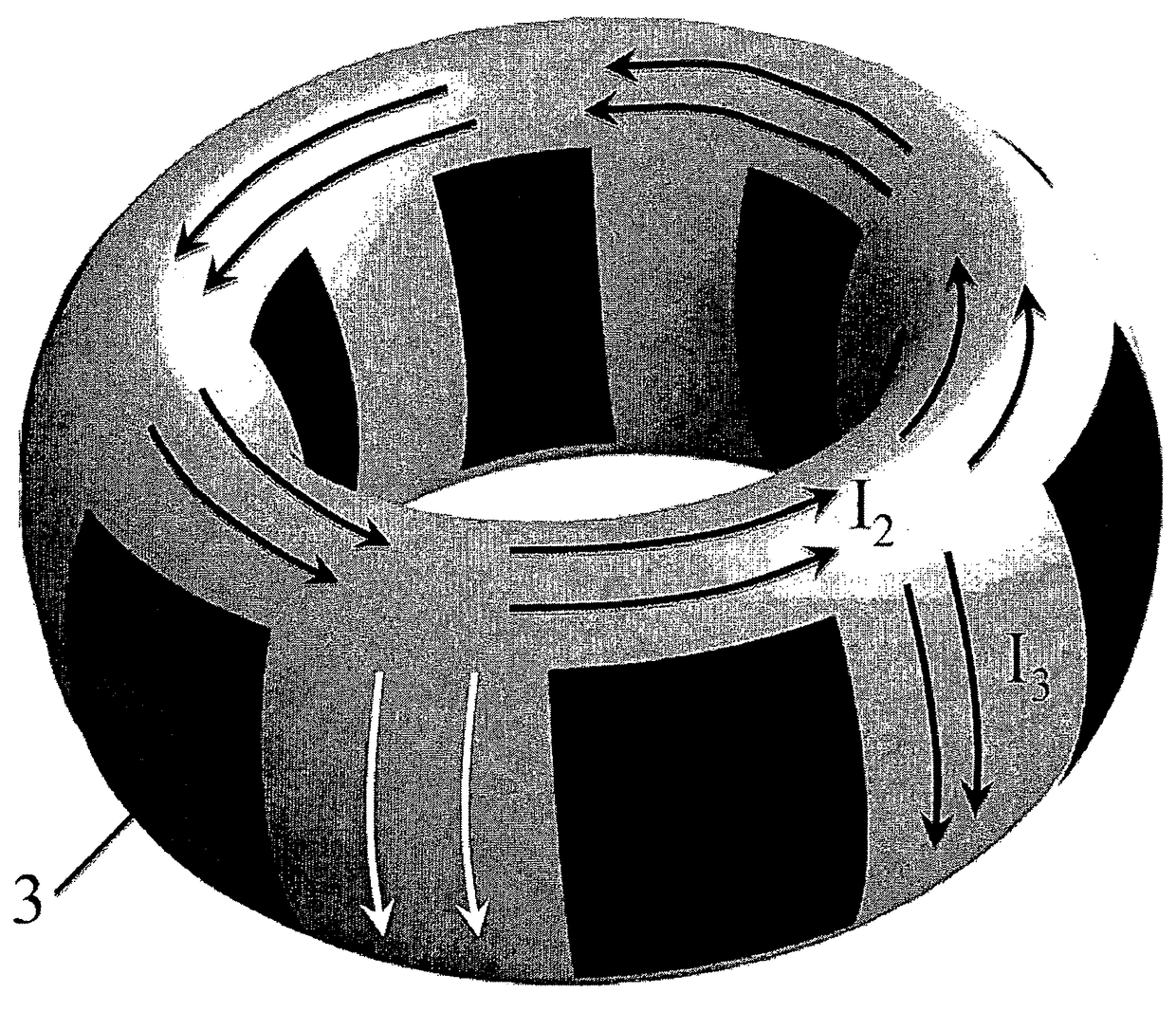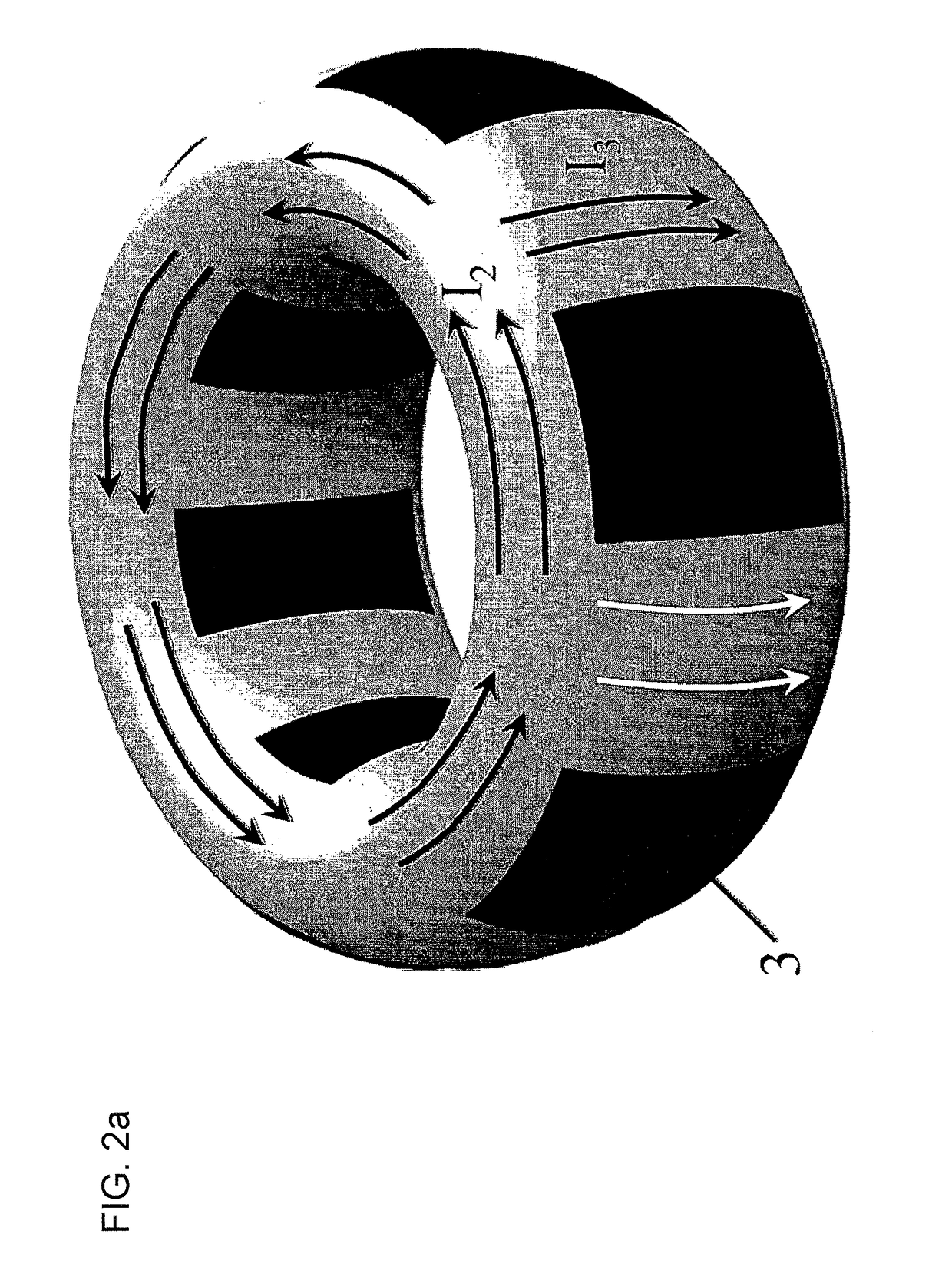Efficient passive broadband gyrator
a passive broadband and gyrator technology, applied in electrical equipment, multiple-port networks, galvano-magnetic hall-effect devices, etc., can solve the problems of noise generation, gyrators based on hall-effect according to the prior art cannot be used for this application, etc., to achieve good inductive coupling of input current, improve overall efficiency, and good inductive conversion current
- Summary
- Abstract
- Description
- Claims
- Application Information
AI Technical Summary
Benefits of technology
Problems solved by technology
Method used
Image
Examples
Embodiment Construction
[0032]FIG. 1 shows a schematic illustration of an exemplary embodiment of the gyrator according to the invention. The Hall effect material is segmented into two conductor loops 1 and 2. The magnetic field, which is not shown for the sake of clarity, is homogenous in this space and located perpendicularly to the drawing plane. Coils 1a and 2a are wound around the conductor loops 1 and 2, respectively. An input current I1, which is coupled in via the coil 1a, produces an electromotive force E1 in conductor loop 1. The Hall effect converts this electromotive force into a current I3 through conductor loop 2. This current induces the output voltage U4 in the coil 2a. If, conversely, an input current I4 flows through the coil 2a, this produces an electromotive force E2 in conductor loop 2. As a result of the right-hand rule, the Hall effect converts this electromotive force E2 into a current I2 through conductor loop 1 which is 180° phase-shifted in relation to the input current, at the s...
PUM
 Login to View More
Login to View More Abstract
Description
Claims
Application Information
 Login to View More
Login to View More - R&D
- Intellectual Property
- Life Sciences
- Materials
- Tech Scout
- Unparalleled Data Quality
- Higher Quality Content
- 60% Fewer Hallucinations
Browse by: Latest US Patents, China's latest patents, Technical Efficacy Thesaurus, Application Domain, Technology Topic, Popular Technical Reports.
© 2025 PatSnap. All rights reserved.Legal|Privacy policy|Modern Slavery Act Transparency Statement|Sitemap|About US| Contact US: help@patsnap.com



